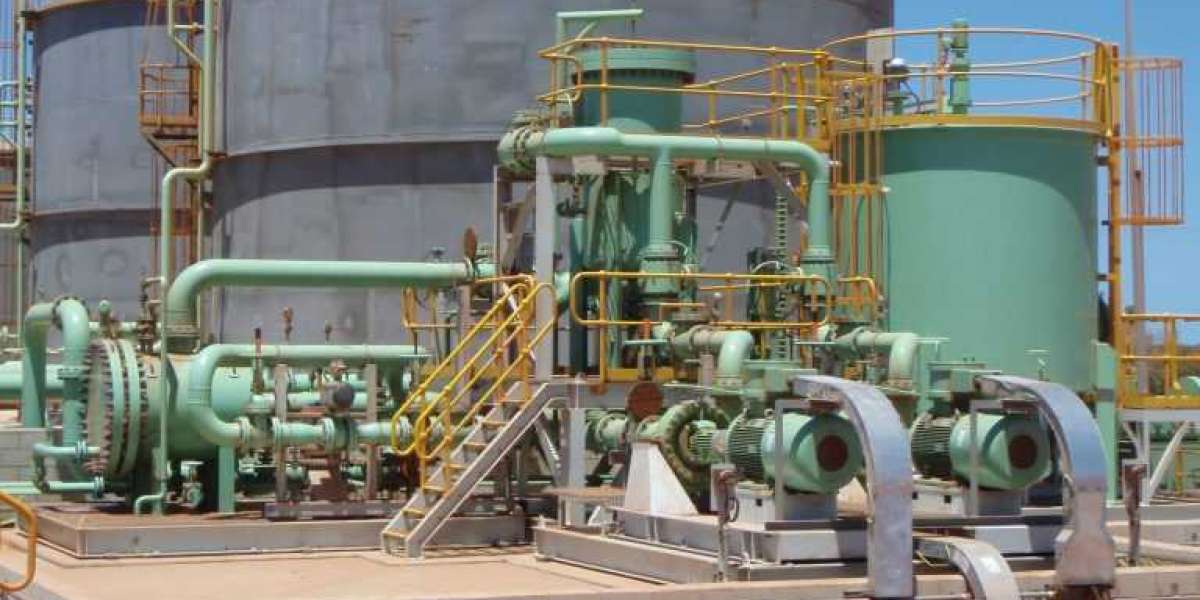The global Produced Water Treatment (PWT) Market is at an inflection point. Once viewed purely as a costly waste stream from the oil and gas industry, produced water—a complex mix of water, oil, dissolved solids, metals, and chemicals brought to the surface during hydrocarbon extraction—is fast being recognized as a critical, albeit contaminated, water resource.
Market data confirms this shift: the sector, valued at US$ 136.0 Billion in 2024, is projected to expand significantly, reaching an estimated US$ 216.5 Billion by the end of 2035. This trajectory represents a healthy Compound Annual Growth Rate (CAGR) of 4.4% over the forecast period (2025–2035). This robust growth is not a random fluctuation; it's being powered by a convergence of environmental, economic, and technological forces that are redefining water management within the energy sector and beyond.
Key Drivers Accelerating Market Growth
The increasing need to treat produced water is fueled by several powerful, interconnected drivers. The oil and gas industry, particularly with the expansion of unconventional extraction techniques like hydraulic fracturing and horizontal drilling, is generating massive and complex volumes of produced water.
1. Water Scarcity and the Push for Reuse
Perhaps the most compelling driver is the escalating global issue of water scarcity. In water-stressed regions, where oil and gas operations are often intense (such as the Permian Basin in the US), the demand for freshwater for industrial use is unsustainable. Treating produced water for reuse in drilling, fracturing, or Enhanced Oil Recovery (EOR) operations provides a closed-loop solution, dramatically reducing reliance on freshwater sources. This economic and environmental imperative is driving operators to invest heavily in advanced on-site treatment systems.
2. Stricter Environmental Regulations
Regulatory bodies worldwide are imposing increasingly stringent rules on the disposal of produced water, whether through surface discharge or deep-well injection. Untreated produced water contains contaminants like hydrocarbons, high salinity, and even naturally occurring radioactive materials, posing a severe risk to ecosystems and public health. This regulatory push compels companies to adopt sophisticated treatment technologies to ensure compliance, transforming the PWT market from a compliance-driven cost center into a strategic component of sustainable operations.
3. Technological Advancements
The complexity of produced water—which varies significantly in composition, temperature, and salinity depending on the reservoir—demands flexible and powerful treatment solutions. Technological innovation is rising to the challenge:
Membrane-Based Filtration: Technologies like Reverse Osmosis (RO) and Nanofiltration (NF) are becoming more efficient and cost-effective, enabling the removal of highly concentrated dissolved solids to produce water quality suitable for reuse or even desalination.
Advanced Oxidation Processes (AOPs): These chemical and physical processes are crucial for breaking down persistent organic contaminants and dissolved hydrocarbons that conventional methods miss.
Digitalization and Automation: The integration of IoT (Internet of Things) sensors and Artificial Intelligence (AI) for real-time monitoring and automated dosing is optimizing treatment efficiency, reducing operational costs, and minimizing chemical usage.
? Navigating the Treatment Technology Landscape
The produced water treatment process is typically a multi-stage approach tailored to the water's unique composition and its intended end-use (e.g., reinjection, hydraulic fracturing fluid, or surface discharge).
| Treatment Stage | Common Technologies | Primary Function |
| Primary (Pretreatment) | Gravity Separation, Hydrocyclones, API Separators | Removal of free oil, grease, and large suspended solids. |
| Secondary (Standard Treatment) | Dissolved Gas Flotation (DGF), Coagulation/Flocculation | Removal of emulsified oil and finer suspended particles. |
| Tertiary (Advanced Polishing) | Reverse Osmosis (RO), Ultrafiltration, Advanced Oxidation | Removal of dissolved salts, persistent organics, and residual contaminants for high-quality reuse. |
While physical separation methods remain the most widely used for initial, high-volume handling, the market's future lies in tertiary treatment advancements. As the goal shifts from simple disposal to high-value reuse, the demand for high-performance membrane and chemical solutions will surge.
Challenges and Opportunities on the Horizon
Despite the positive outlook, the PWT market faces significant hurdles. The high capital expenditure (CAPEX) required for advanced treatment systems, particularly those involving membranes or thermal distillation, can be a barrier for smaller operators. Furthermore, the variable and often unpredictable nature of produced water quality necessitates highly flexible and robust systems, which adds to the operational complexity and cost.
However, these challenges also create fertile ground for opportunities:
Resource Recovery: Beyond water, produced water contains valuable byproducts like lithium, magnesium, and other minerals. The development of technologies to economically extract these resources will transform produced water management into a profit center.
Mobile and Modular Systems: The increasing adoption of mobile, containerized, and modular treatment units offers flexibility and reduced transportation costs, particularly for projects in remote or unconventional fields.
Strategic Partnerships: Collaborations between upstream companies, midstream water handlers, and technology providers are creating large-scale, centralized recycling hubs that leverage economies of scale and advanced treatment solutions.
The 2035 Outlook: A Sustainable Future
The projection of the produced water treatment market reaching US$ 216.5 Billion by 2035 is a clear indicator that sustainability is no longer optional—it's foundational to the energy sector's license to operate. The market’s growth at a 4.4% CAGR reflects a sustained, committed investment in sophisticated water management.
By 2035, the industry will have moved beyond basic disposal. We are moving toward a paradigm where produced water is viewed as an industrial feedstock. The successful integration of PWT solutions—driven by advanced technologies and spurred by environmental necessity—will play a critical role in mitigating water risk, ensuring regulatory compliance, and cementing the commitment of the oil and gas sector to a more responsible and sustainable operational future.





